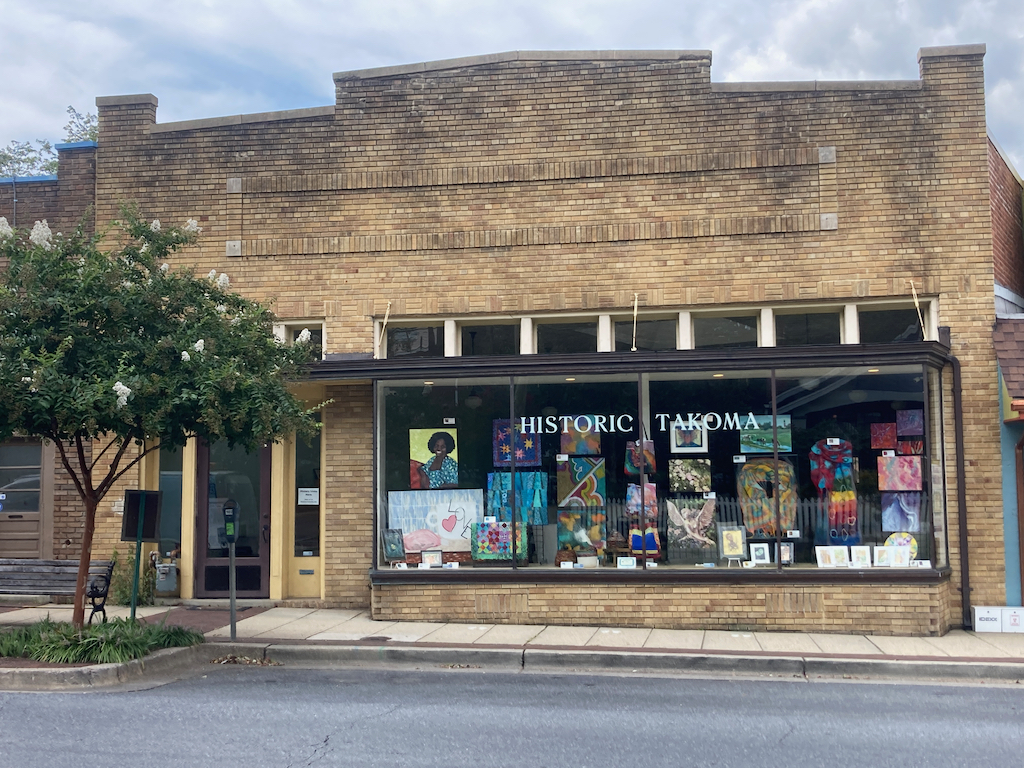
Historic Takoma
History Lives Here

History Lives Here
The architecture in the oldest neighborhoods of Takoma Park largely reflects the efforts of dedicated citizens who, in the 1970s and 1980s, organized under the banner of historic preservation to prevent their wholesale destruction. The threats were three-fold: urban freeways, a growing Montgomery College, and absentee landlords who chopped up houses into small apartments and then performed little maintenance. Many parts of Takoma Park were literally crumbling.
The 1974 Sector Plan for the Transit Impact Area of Takoma Park (that is, the area closest to Metro) noted that the condition of houses along Cedar and Maple was deteriorating, that maintenance and needed improvements were unlikely, and that replacement by townhouses should be considered. Meanwhile in the early 1970s the Montgomery County Planning Commission envisioned a major rezoning of 10 blocks and 42 acres near the Metro (the “Mustard Sheet”) for commercial and multi-family structures, a 500 car commuter parking lot, and widening of roads (Piney Branch Road to a six-lane divided highway, Tulip Avenue to four-five lanes, and Carroll Avenue also four-five lanes). Around the same time Montgomery College announced plans to buy and raze 21 homes near the campus to build new buildings and parking lots (“Block 69”).
Citizens mobilized. Historic Takoma was founded. Historic districts were identified and approved. The value and features of individual houses were recognized. Resources were devoted to acquiring and renovating (saving) older houses. Over time, using the tools of education, design guidelines and protection, and tax credits, the housing stock was saved and the community bloomed.
Study of the history of Takoma Park has traditionally focussed on the early subdivisions, the early arrivals, and the older houses on the west side of the Takoma area. Yet there is another rich history of areas to the east and a diverse community of races, ethnicities, and cultures, as well as houses and commercial areas, that remain largely unexplored and undocumented. Much work remains to be done to learn about and document the entire community – not just the so-called “historic” areas.
Today Historic Takoma seeks to understand the people, the plans, the businesses, and the buildings that created the Takoma Park community while looking ahead to help the community grow and change without losing its historic integrity.
For further information about Historic Preservation in Takoma Park write to: info@historictakoma.org